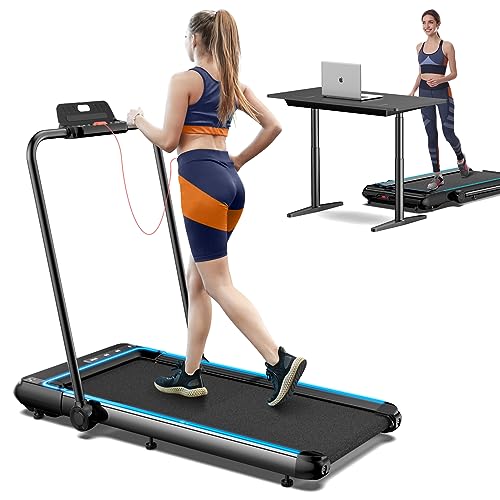The Walking Machine: A Comprehensive Guide to Your Fitness Companion
In today's hectic world, where time is a high-end, preserving a consistent exercise routine can be a challenge. For numerous, a walking machine-- commonly understood as a treadmill-- functions as an ideal physical fitness companion. This article supplies a thorough take a look at walking machines, including their advantages, types, maintenance suggestions, and regularly asked concerns.
Why Choose a Walking Machine?
Walking machines offer a practical and reliable method to integrate cardiovascular workout into life. Here are a number of essential benefits:
- Convenience: Walking machines allow people to exercise anytime, regardless of weather or time constraints. They are best for busy schedules.
- Versatility: Users can walk, jog, or perform at their own rate and intensity.
- Safety: Walking machines provide a lower threat of injury compared to outdoor walking or running, particularly for newbies or those recuperating from injuries.
- Tracking Progress: Many treadmills featured integrated monitors that track metrics like speed, range, and calories burned.
Kinds Of Walking Machines
When thinking about a walking machine, it's necessary to pick the best type based upon private physical fitness objectives and space restraints. Below are the main kinds of walking machines:
| Type | Description |
|---|---|
| Manual Treadmills | These machines do not have a motor, and users require to stroll or run to turn the belt. |
| Electric Treadmills | Powered by an electric motor, permitting users to set the speed and slope easily. |
| Folding Treadmills | Designed for easy storage, these treadmills can be folded when not in usage. |
| Desk Treadmills | Suitable for a double work and workout environment, these compact machines allow walking while working. |
| Slope Trainers | These allow users to simulate uphill walking, boosting exercise intensity and calorie burn. |
Choosing the Right Walking Machine
Selecting the ideal walking machine can considerably impact inspiration and effectiveness. Here are some factors to think about:
Key Features to Look For
- Motor Power: An effective motor guarantees a smooth and consistent exercise. For periodic walkers, a 1.5 HP motor is usually enough; for much heavier usage, search for 3.0 HP and above.
- Belt Size: A wider and longer belt provides more space for a comfortable stride. Requirement sizes range from 16 inches broad and 50 inches long.
- Incline Options: Adjustable slope settings can replicate walking or running uphill, increasing the strength of the exercise.
- Shock Absorption: Good shock absorption reduces the risk of joint injuries and improves convenience.
- Console Features: Look for built-in workouts, heart rate screens, and connection features like Bluetooth for a more appealing experience.
Budget plan Considerations
Walking machines come in a vast array of prices, depending upon functions and construction quality. Here's a rough budget plan breakdown:
| Price Range | Features |
|---|---|
| Under ₤ 300 | Fundamental manual or little electric treadmills with limited functions. |
| ₤ 300 - ₤ 700 | Advanced electric treadmills with incline, medium power motors, and much better warranties. |
| ₤ 700 - ₤ 1500 | Top quality electric treadmills with bigger built-in display screens, substantial functions, and guarantees. |
| ₤ 1500 and above | High-end designs offering innovative innovation, functions, and long lasting construction for serious fitness enthusiasts. |
Upkeep Tips for Your Walking Machine
To ensure durability and ideal performance of a walking machine, think about the following maintenance tips:
- Regular Cleaning: Dust and sweat can accumulate on the machine and the belt. Clean down the surfaces and clean the belt routinely.
- Lubrication: Depending on the model, oiling the running belt occasionally can prevent wear and tear. Check the producer guidelines for advised lubrication schedules.
- Assessment: Periodically check the machine for loose screws or worn parts. Tighten and change as needed.
- Calibration: Occasionally, examine the calibration of your machine's metrics to ensure they provide accurate data.
- Proper Use: Follow the producer's recommendations for weight limits and operational guidelines.
Frequently Asked Questions About Walking Machines
1. Are walking machines a good workout?
Yes, walking machines offer an outstanding cardiovascular workout, can aid with weight loss, and improve total health.
2. How typically should I use a walking machine?
Goal for a minimum of 150 minutes of moderate-intensity aerobic activity weekly, which can easily be accomplished with routine sessions on a walking machine.
3. Can I reduce weight on a walking machine?
Yes, including a walking machine routine into a healthy diet can promote weight-loss, especially if combined with intervals and incline training.
4. Is it safe for senior citizens to use a walking machine?
Yes, walking machines can be safe for seniors with low-impact settings and security features like hand rails. However, individuals ought to consult with their doctor before starting any workout program.
5. What's the difference between a treadmill and a walking machine?
The term "walking machine" usually refers to a treadmill intended for walking, while "treadmill" can describe machines utilized for different strengths, consisting of running.
With their versatility and benefit, walking machines can significantly enhance one's fitness journey. By thoroughly selecting Cheap Treadmills , guaranteeing proper maintenance, and incorporating different workout techniques, users can maximize their walking machine's advantages. Just like any exercise program, consistency is key to accomplishing lasting fitness results.

